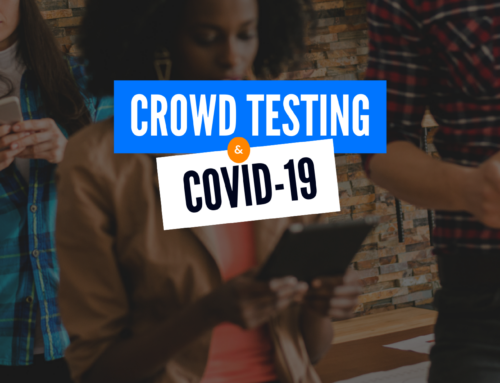The well-trodden path
Have you ever been walking along a path that lines a patch of grass, and as you approach a corner, you notice there’s a well-trodden, worn path that cuts the corner? This is a day-to-day example of how usability works.
See, the master planner in all their wisdom, felt that the person walking the path would be perfectly content with continuing along toward the corner and turning 90 degrees to head in another direction. In theory, that’s all well and good, but in practice, well, that’s another story.
For whatever reason people will want to ‘cut the corner’ – potentially to save some time, or just simply because they can! The motives of the person walking the path will naturally be different, so their reasons for deviating from path will differ from person to person.
Could be it be poor design? Maybe, but not guaranteed. Could it be that the designer didn’t foresee how it would be used? Likely. What it shows, though, is that they lacked insight into how it may be used, or what the users wanted from that path in the first place.
This is where usability comes in – aligning what your users wants to what you design and build.
What is usability defined as?
The Nielsen Norman Group – founded by Jakob Nielsen, who authored the 10 “Nielsen Principles” for interaction design – define it as a “quality attribute that assesses how easy user interfaces are to use”.
I won’t be going into those 10 principles in this particular article, but I think it’s worth touching on what Neilson defines as the 5 quality components of usability:
- Learnability – how intuitive and easy is it? Can basic tasks be carried out with relative ease?
- Efficiency – once the user understands what you’ve designed, how quickly can they accomplish those tasks?
- Memorability – how easy is it to remember how to use it?
- Errors – if the user makes an error, how clear and effective is the messaging shown to guide the user in correcting that error?
- Satisfaction – how positive is the experience as a whole?
The 5th component – satisfaction – will very much be dictated by the proceeding 4. Nail those 4 and you can all but guarantee a positive outcome with the fifth.
Now, whilst the above is very much geared toward user interfaces, they can very much apply to anything being used by someone.
What are the common issues of today?
Let’s take a look at these from the perspective of a typical customer using an e-commerce website.
The first thing they see – at a somewhat high level – is the overall design – the graphic user interface (GUI). This may be cluttered, be too heavy on information, not be intuitive enough. Remember, it needs to be learnable, efficient, memorable and be clear with what and where the user has made a mistake (i.e. error prevention). If doesn’t deliver well on any of these, this can be summarised as poor design or information overload.
Next, lets zoom in a bit more, and look at the next bugbear for users – navigation. This can be anything from the menus they’re presented with, to the search functionality they have available to them, to the “bread-crumbs” they can (or cannot as the case may be) see to determine where they are in the hierarchy of that given store (i.e. Mens > Shoes > Sports > Football etc). Being able to navigate is being able to discover. It’s said that “the first law of ecommerce is that if users cannot find the product, they cannot buy it either”. Simply, poor navigation means poor conversion, and poor conversion means poor profits.
Then we have inconsistency – this can be anything from the visual language (iconography, location of features etc) to the workflow of a given task (i.e. searching, adding to basket, checkout flow and so on) being too long and convoluted. If we just take a brief peak back to the 5 quality components of usability, lets focus on the first 3 – it needs to be easy to learn (not be an overload of information), it needs to be efficient (not long winded, and fairly quick to complete a task) and be memorable (if the first two – learnability and efficiency – are good, then memorability should be somewhat of a given).
Zooming in a bit more now, let’s look at the design choices, and specifically the text. Form should not be prioritised over function – and by function, I mean the ability for text to serve its purpose; conveying information. A common usability faux pas is to go for a fancy “light” font. Something that is too thin and isn’t necessarily clear to the user. There are also accessibility implications to this too, and whilst accessibility guidelines ensure things are accessible to people with a diverse range of hearing, movement, sight, and cognitive ability, it makes it accessible (i.e. readable and legible) for all too – equality should be a given in design.
Moving laterally for a second, colour is just as important and namely contrast. Whilst a light colour on a light background will look somewhat modern and chic, it isn’t readable or legible for everyone. And it isn’t just people, it’s where you are using the website or app that plays a part too. Something that isn’t particularly dark, against a light background won’t be easily viewable outside where sunlight may be casting upon the laminated displays of today’s modern mobile devices.
Zooming back out now – let’s look at efficiency. Generally, the less the number of clicks or taps, the better. If completing a simple task takes dozens of these, that’s no good. It’s not learnable, it’s not memorable, and it’s definitely not efficient. As a rule of thumb, the more steps you make them take, the more chances you give them to walk away.
Error handling is important too, and when it’s overlooked and very minimal in its implementation it makes the learning process much harder. We’ve all encountered issues relating to this, and it’s not an enjoyable experience, which will lead to abandonment (this report by Adobe makes for interesting reading on abandonment – see slide 12 in particular) if not handled correctly.
The list could go on, and on, but I do hope this has provided a good starter into the world of usability frustrations.
What you can see, though, is that they pivot around the 5 quality components, or more specifically are often at odds with them. Adhering to those components and using them as guiding principles will reduce the chance of butting heads with them, and thus creating a better experience for your customers, and in turn, better conversion.
What are the trends of tomorrow?
I would predict that the digitisation of things that were previously (and typically) provisioned in physical settings will be much more common. In my previous guest article, “Why mobile testing is essential?”, I touched on the digital-first approach, and how institutions that have historically been bricks and mortar based, are now opting to close large swathes of their physical estate in favour of going digital. This is certainly more relevant as we head into the post-COVID era of commerce.
Next, I feel accessibility will become much more common place – such that it’s incorporated into products from their very inception (i.e. shift-left), rather than jerry-rigging them into products later on down the line. I have worked with clients in the past that have openly stated they’ll “sort accessibility later” and just want to get their app/website live as soon as possible, and this simply isn’t the way to go about your business. Accessibility is all about inclusivity, and if you are denying approximately 15% of your customer base from accessing your product fully from the outset, that’s not the right thing to do – in the name fairness, morality or financially.
Then we have “micro-interactions”. These will underpin a much more dynamic and user-driven experience with your product. The ability for users to forge their own path, of their own direction and control, will make for a much more user-centric experience. A great example of this can be seen here.
I’d also foresee the fragmentation between platforms decreasing with the emergence of better web and app technologies, meaning that a more unified experience is possible regardless of what device type or method of engagement you opt for (i.e. web or app). In years gone by it was all too common for the iOS and Android experiences to differ significantly, and dare I say, the Android experience was generally of a much lesser quality, likely due to the capabilities of that platform out of the box. Then we have the difference between the web and app experiences – they’ve never really been aligned. However, it’s becoming more common to have an experience that merges the two, with the upper and lower portions of apps – the navigational elements typically – being native, and the central portion being a web-view of the website, thus providing a more consistent experience across both.
I also think native device capabilities such as FaceID, Apple/Google Pay, will become the norm rather than the exception across websites and apps. These services are designed to make life easier, and data entry less frequent. It’s almost expected now, and somewhat bemoaned when websites/apps don’t utilise these – it’s not just the capabilities of those facilities, it’s the trust consumers have in them as well.
You also have things such as video authentication, which seem somewhat of a novelty now, but will become more common place. Starling Bank, a digital-only bank in the UK, ask for a video of customer speaking a specific line of text, to prove who you are – compare that to other banks where you have to fill-out forms in branch, post them off and wait – for days and days. I mean, that’s just archaic now, right?
How can you gain usability insights?
Rather than going over Usability Testing, which you no doubt have a basic understand of already, I’ll instead cover some key concepts and approaches to gaining a better insight into the usability of your product.
There are two main types of insight you can gain: qualitative and quantitative. What’s the difference between those two?
Qualitative is more opinion based and is aimed at understanding how something is, or should be, used – how easy was it to do x, how easy was it to find y, and so on.
Quantitative, on the other hand, is more about how quick something took, how many errors were found, and more broadly, the success rates of given tasks. A measurable, metrics-based insight in other words.
They both play their part in the process, but it is generally the qualitative insight where the value will be extracted. The quantitative data, for example, will show how many people completed a task (i.e. the success rate), but won’t tell you why a percentage didn’t (i.e. the failure rate) – in that respect it shouldn’t be relied upon solely as your single source of insight. Look at it as adding context to the insight you’ve already gained from your qualitative insights.
That said, there are methods of quantitative insight that do give you actionable and clear evidence of x working better than y – this is known as A/B testing – but this, strictly speaking, isn’t an aspect of usability. I’ll discuss this more, briefly, toward the end of the article.
In summary then, the name of the game with usability is to, one, uncover problems with your design (UI – what they see and use – and/or UX – the flows/journeys they’ll go on to complete tasks), two, to discover opportunities (i.e. a user would expect x to do y, or be in a particular location etc, thereby informing future designs or iterations), and three, to use those the findings to better understand your users (as consumers rather than what they want from a design per se).
Systems should be designed in a user-centric manner – they are, after all, the ones that will use it. An approach that underpins that is “Design Thinking” – it pulls “together what’s desirable from a human point of view with what is technologically feasible and economically viable”.
A/B testing
Before we part ways, let’s just touch on A/B testing briefly, which is a method of testing utilised by companies that have, and run, digital channels (e.g. apps or websites). Simply, this method of testing allows them to deploy different variants of an app or website to measure – quantitively – how well they convert (i.e. of those who visit, how many people convert to a purchase). Now, whilst this doesn’t formally sit under usability testing, it is somewhat of a bi-product, or closely related family member of it. I say this as the variants will be informed by hypothesis, and those hypotheses will be based upon qualitative or quantitative insights, gained elsewhere – i.e., via, but not limited to, Usability Testing.
As humans we are naturally inclined to gravitate toward things we like and trust. In that respect, doing everything you can to better understand your customers – what they want and need – and ensuring your UI and UX are closely aligned to that, will ensure that you are well positioned to maximise the 5 quality components of usability, and thus ensure your conversion is as maximised as it can be.
Good usability can take your customers from occasional visitors to repeat business. Great usability, however, can take them from repeat business to loyal customers, that will willingly pay a premium to transact with you, even if they can get things cheaper, elsewhere. Get this right, and you’ll prosper.
Sam Needs is an experienced Test Consultant with over 9 years experience working in sectors such as Financial Services, Retail and Business Banking, Utilities, Consultancy and Telecoms.





